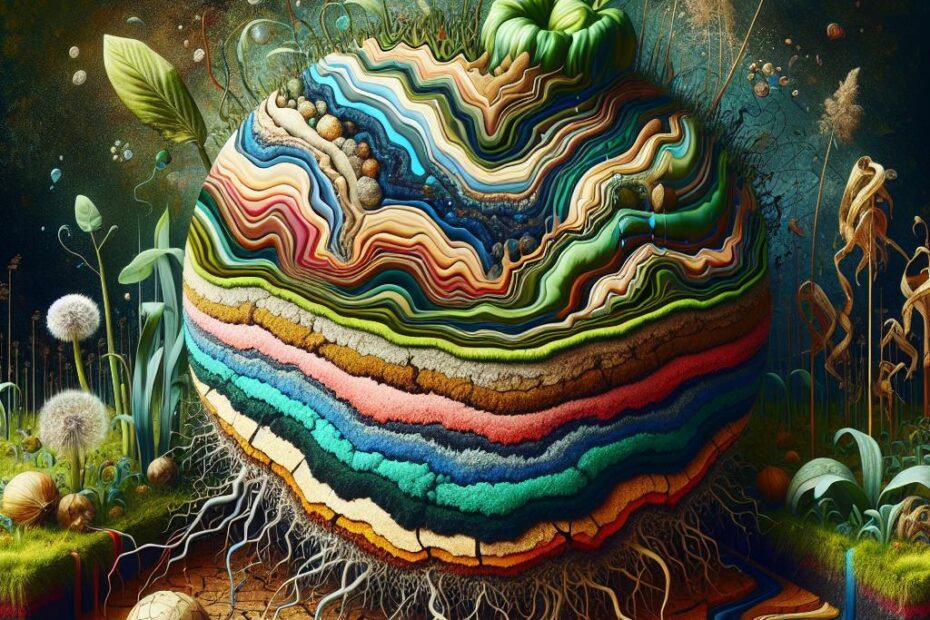Title: Signs of Poor Drainage Soil: Understanding the Problems and Solutions
Introduction:
Healthy soil is essential for the growth and development of plants, as it provides nutrients, oxygen, and water necessary for their survival. However, poor drainage soil can hinder plant growth and lead to various issues. In this article, we will explore the signs of poor drainage soil, its effects on plants, and practical solutions to improve soil drainage.
Signs of Poor Drainage Soil:
-
Standing Water: One of the most obvious signs of poor drainage soil is standing water in your garden or yard. If you notice puddles that persist after rainfall or irrigation, it is a clear indication that water is not draining properly.
-
Waterlogged Soil: In addition to standing water, waterlogged soil is another sign of poor drainage. When soil becomes saturated with water, it displaces oxygen, which is essential for root growth. This can lead to root rot and other diseases in plants.
-
Root Rot: Root rot is a common issue caused by poor drainage soil. When roots are constantly immersed in water, they become susceptible to fungal infections that can eventually kill the plant. Yellowing leaves, stunted growth, and wilting are common symptoms of root rot.
-
Algae and Moss Growth: Excessive moisture in the soil can promote the growth of algae and moss. If you notice green patches on the soil surface or on plant leaves, it is a sign of poor drainage.
-
Nutrient Deficiency: Poorly drained soil can lead to nutrient leaching, where essential nutrients are washed away by excessive water. This can result in nutrient deficiencies in plants, leading to poor growth and weak stems.
-
Compacted Soil: Waterlogged soil can become compacted over time, making it difficult for roots to penetrate and access nutrients. Compacted soil also reduces oxygen levels, further hindering plant growth.
Effects of Poor Drainage Soil on Plants:
- Reduced nutrient uptake
- Stunted growth
- Root rot
- Increased susceptibility to pests and diseases
- Yellowing leaves
- Wilting
Practical Solutions to Improve Soil Drainage:
-
Install Drainage Systems: One of the most effective ways to improve soil drainage is to install drainage systems such as French drains or perforated pipes. These systems can help redirect excess water away from your garden or yard.
-
Amend Soil: Adding organic matter such as compost, peat moss, or vermiculite can improve soil structure and drainage. Organic matter helps loosen compacted soil and increase its ability to absorb and retain water.
-
Raise Beds: If your soil is consistently waterlogged, consider raising your beds to improve drainage. Raised beds allow excess water to drain away more easily and prevent waterlogging.
-
Plant Water-Tolerant Species: If your soil is naturally heavy and poorly drained, consider planting water-tolerant species such as water lilies, cattails, or iris. These plants can thrive in wet conditions and help absorb excess moisture from the soil.
Benefits of Improving Soil Drainage:
- Healthier plant growth
- Reduced risk of root rot and diseases
- Improved nutrient uptake
- Increased oxygen levels in the soil
Conclusion:
Poor drainage soil can have detrimental effects on plant growth and health. By recognizing the signs of poor drainage and implementing practical solutions to improve soil drainage, you can create a healthy environment for your plants to thrive. Whether you choose to install drainage systems, amend soil, raise beds, or plant water-tolerant species, improving soil drainage is key to successful gardening. By taking proactive steps to address poor drainage issues, you can enjoy a bountiful garden and lush landscape for years to come.
By following the tips and suggestions outlined in this article, you can transform your garden into a flourishing oasis of plant life. Remember, healthy soil is the foundation for healthy plants. Take the time to assess your soil drainage and make the necessary adjustments to ensure optimal growth and plant vitality.
